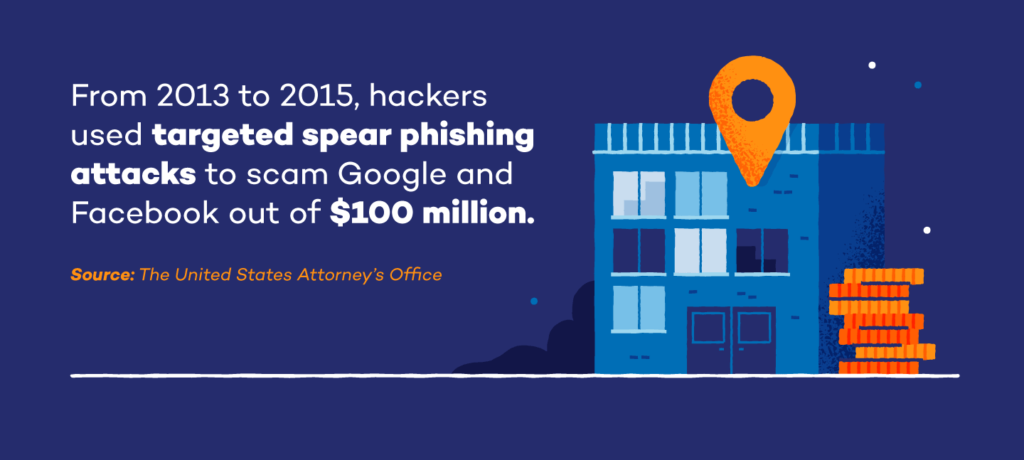What are Phishing Attacks
Phishing attacks are attempts to steal business data, typically involving personal information, login credentials, bank and card details, or other sensitive data, in order to be used or sold. By disguising themselves as a trustworthy entity phishing attacks target employees by stealing private data or requesting them to download a malicious file, plugin or software. This guide will delve into the nature of phishing attacks, how they impact small businesses, and practical strategies to address and prevent them.

Types of Phishing Attacks
Email Phishing
Most phishing attacks occur through sophisticated email where an attacker will falsely claim to be part of an organisation. It is essential to inspect what domain name the email is sent under. Generally, fake domains may have additional characters (i.e. flightcentre.com is now flight-centre.com) or use uncommon subdomains (flightcentre.fly.com). A majority of emails come as a threat in hopes that the business.
Spear Phishing
This is a more targeted approach, where the attacker customizes their email to include confidential data which helps enhance the effectiveness of attackers to manipulate and exploit victims into actions such as unwarranted transfer of funds.
Whaling
These are attacks directed at management or high-profile individuals within the business, such as the administrative crew. These are often highly sophisticated and are personalized to accustom to the business’s current situations, data, or protocols. These attacks do not usually involve malicious content but rather mislead the business by constructing personalized messages relating to the business.
Clone Fishing
Clone fishing is a newer emergence of phishing threats. Attackers will impersonate and duplicate a real organisation’s messages. These also include replica attachments that have been instead replaced with malicious content. These attachments are strategically designed to resemble the original documents and can be an imminent threat to any business.
Impacts of Phishing on Small Businesses
Phishing attacks pose many threats to businesses and their stakeholders. It can potentially lead to significant financial losses through artificial transactions and additional recovery costs. Data may be breached, including customer data, login credentials, and bank details.
If you believe your business has been involved in malicious activity, it is important to report it and temporarily shut down operations to prevent further complications. As a result, the business will inevitably lose productivity and tarnish its reputation, making customers and business partners doubt your security and data privacy.
How to Identify Phishing Attempts
Some common signs that your business may be involved in a phishing attempt or scandal include:
- Unexpected Emails
- Be wary of unsolicited emails that claim to be from a trustworthy entity.
- Check the sender’s email address carefully, considering any unusual characters or inconsistencies.
- Suspicious Links and Attachments
- Most phishing attacks will include links or attachments that will infect malware in your system to damage or steal information.
- Ensure links are not hyperlinked by hovering over them to see if they match.
- Avoid downloading attachments.
- Generic, Jargon or Broken English
- If the request looks automated, has incorrect grammar issues, or is not formally formatted, then it most likely may be spam or a phishing attack.
- Urgency and Threats
- The sender may be pressuring you to comply with their rules and make immediate decisions.
Combat Against Phishing
Several strategies can be used to combat against phishing attacks:
- Increase awareness by offering employee training against phishing and enforcing
- Invest in email security solutions that analyze email content, detecting and filtering potential phishing attacks
- Enhance security by using multi-factor authentication to access email accounts
- Regularly update your email and security software
- Develop a response plan to address potential or confirmed phishing attacks and inform employees
Case Study: Facebook and Google
Between 2013 and 2015, Facebook and Google were involved in a phishing scandal where the attacker impersonated Quanta, a Taiwanese company. By using fake invoices, the major corporations were ultimately scammed over $100 million USD. This went on for two years without notice, but once discovered legal action underwent but unfortunately, only half of the money was able to be recovered. This is why it is crucial to be aware of phishing scans as small businesses are equipped with fewer preventative measures.

References
Protect yourself from phishing – Microsoft Support. (n.d.). Support.microsoft.com. https://support.microsoft.com/en-au/windows/protect-yourself-from-phishing-0c7ea947-ba98-3bd9-7184-430e1f860a44
Small business cyber security guide. (n.d.). https://www.cyber.gov.au/sites/default/files/2023-03/ACSC_Small_Business_Cyber_Security_Guide_V6.pdf
The Top 5 Phishing Scams of all Time. (n.d.). Check Point Software. https://www.checkpoint.com/cyber-hub/threat-prevention/what-is-phishing/the-top-5-phishing-scams-of-all-times/
What is a Phishing attack? (2023). Cloudflare. https://www.cloudflare.com/learning/access-management/phishing-attack/
What Is Clone Phishing? – Definition, Examples & More | Proofpoint AU. (2024, March 29). Proofpoint. https://www.proofpoint.com/au/threat-reference/clone-phishing
What Is Phishing? (2020, November 3). Check Point Software. https://www.checkpoint.com/cyber-hub/threat-prevention/what-is-phishing/